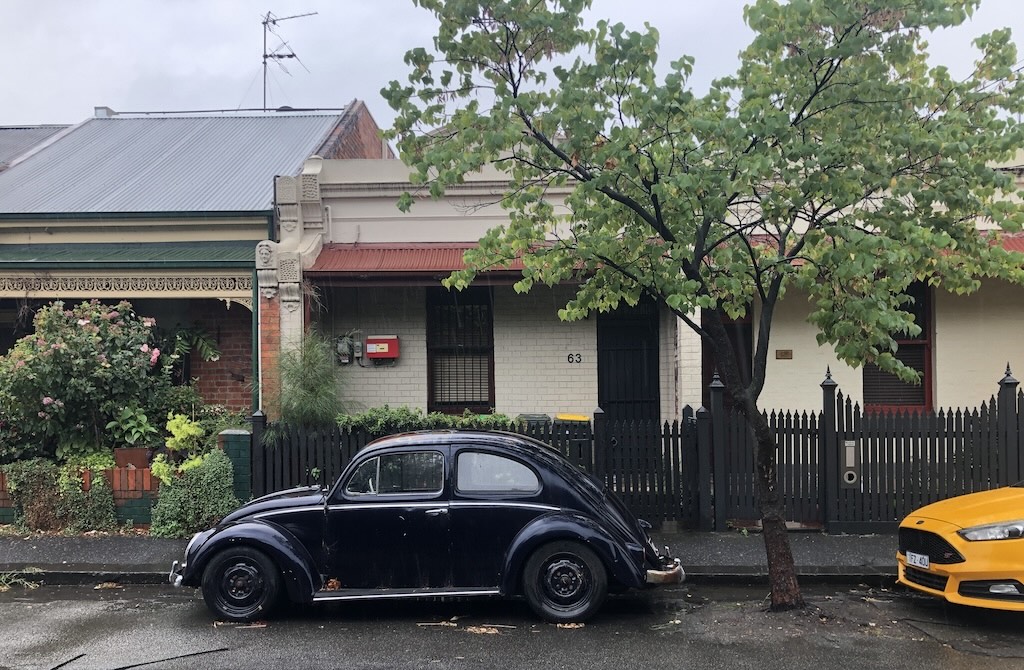home » news » housing » Australia
Vault 2007: Pricey digs and votes

The main topic last night on QandA was housing affordability. It all seemed very familiar. I found something I wrote in 2007 just before the election that brought in the Rudd Labor government. That’s 18 years ago. Here is a shortened version, removing some lint, with an update at the end.
///
For Australian voters, the time has come. A chance to vent with a pencil. A pencil is a very blunt instrument in a voting booth though. We are restricted to putting numbers into little boxes, there being nowhere to add a list of comments and provisos to our votes. The vote has to represent our different selves: as global citizens, parents, workers, homeowners, and designers of the built environment.
The current debates about how a city should be allowed to grow will in years to come become another layer of the city’s history, from the residential towers in suburban “transit cities”, to the rolling carpets of “green” subdivisions at the city’s edge. The city growth debate is intertwined with the sustainable city debate, the housing affordability debate, and the transport debate (among others). Who should pay for the freeway extensions and trains required to service the new suburbs? Is it responsible to encourage first home owners to spend too much money on houses at the edge of the city that are more likely to depreciate? How can a city increase its population and lower its emissions at the same time?
Many of these issues have disappeared under the carpet now that it is election time. The main parties are trying to simplify things for the voter. The omissions in their vague published policies are some proof of this: try searching for policies on indigenous land rights, foreign reconstruction aid, illegally-logged timber importation, or collective transport.
The housing affordability ‘crisis’ is one example of a reduced debate. The parties can’t open their mouths about ditching negative gearing or calming skyrocketing house prices without alienating great swathes of the electorate. The affordability debate is restricted to suggesting new ways to top up the wallets of first home buyers, new ways to lower building costs, empty promises on interest rates, and to pressuring state governments to rezone land at the edge of town for new homes.
The responsibility falls to non-governmental groups, academics, the papers, and “think tanks” to expose and discuss the issues that the political parties are unable to consider. Sometimes these think tanks are so close to political parties that they could easily be mistaken for them. The Institute of Public Affairs’ Alan Moran released a pro land release book last year [2006] entitled “The Tragedy of Planning: Losing the Great Australian Dream.” It was introduced by Prime Minister in waiting Peter Costello. The book is not going to win any prizes for balance – here’s a sample: “It is only in recent times that opposition to [sprawl] has assumed mystical respectability on a par with saving whales, stopping global warming and preventing GM foods. As with those other goals, opposition to urban sprawl is cloaked in a mantle of moral superiority that pretends to self-denial but is invariably laced with self-interest.”
The newspapers are swallowing the IPA line along with the hook and sinker. Reports this week on housing affordability, which has zoomed forward to become a key election issue, use graphs and statistics from Demographia, a small St Louis organisation with a website that shouts in red capital letters: “URBAN CONSOLIDATION & SMART GROWTH: DESTROYING THE DREAM OF HOME OWNSERHIP.” That typo is theirs. The man behind Demographia, Wendell Cox, is honoured to be at the top of the Sprawlwatch website’s list of pro-sprawlers.
Wendell Cox and Alan Moran from the IPA spoke at the Housing Industry Association’s conference in Melbourne in 2005, at which the president of the HIA, Bob Day, gave a speech with the familiar sounding title of, “Law of Unintended Consequences – How Urban Planning Policies are Destroying the Great Australian Dream”. According to the HIA, Day spoke about, “the successive waves of rules and regulations imposed on the industry as an urban ‘planning plague’ that must be defeated if affordability is to be restored.”
It is unfortunate that one of the key election issues has been framed and scripted by openly libertarian organisations and the HIA. This is an important debate on the built environment but only one of the debating teams has turned up, advocating sprawl.
November 2007
///
Meanwhile, back in 2025 … we’re in a bigger pickle than ever. Vomitous sprawl in Melbourne’s north and west has increased supply, but without providing adequate roads, public transport or community facilities. Here’s zannonymous’s eye-opening day in the life of Kalkallo commuters on youtube.
And prices just keep on increasing beyond the reach of mere mortals.
Demographia is banging the same drum. Open up more land! “The crisis stems principally from land use policies that artificially restrict housing supply, driving up land prices and making homeownership unattainable for many,”
The IPA’s 2024 solutions to the problem are to loosen planning laws, allow first home owners to loot their super, and to restrict immigration and foreign investment.
The Liberal Party’s policies, released in the last few days, follow the IPA’s lead. They want to restrict purchases of existing homes by foreigners, and to lower migration mostly by targeting refugee intakes and foreign tertiary students. This will somehow make homes more affordable to buy. The logic is beyond me. On that first point, foreigners bought fewer than 2000 existing homes in 2022-23… a drop in the ocean. They’d also like to heat up the market a bit by allowing first home owners to deduct their mortgage interest off their taxable income and gut their super of up to 50,000.
Labor is similarly attending to first home buyers, lowering deposits to 5%. They’re also throwing a few sheckels at “social” housing and leaving public housing to its slow death.
The wicked problem remains the same. People want housing to become an affordable utility again, but in such a way that housing as a commodity continues to provide great tax deductions and returns. But it can’t dance to both tunes at once.
Posted by Peter on 15.04.25 in housing
tags: vault


